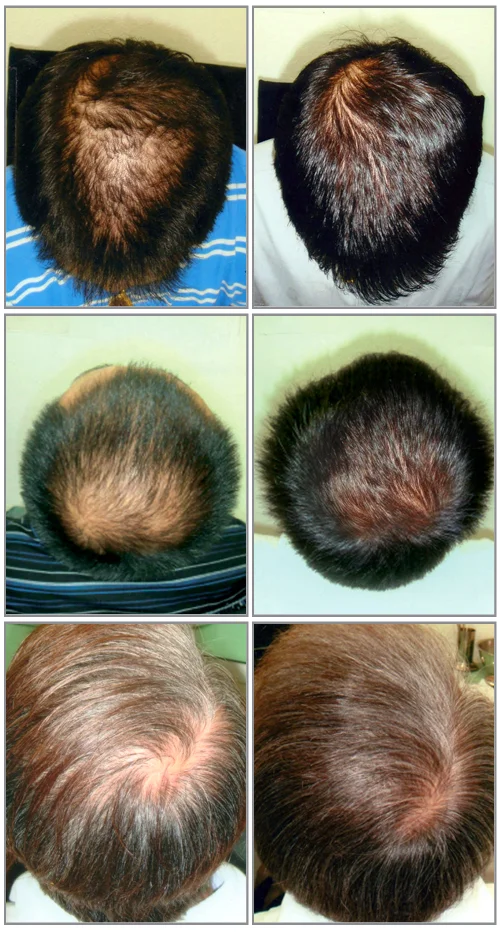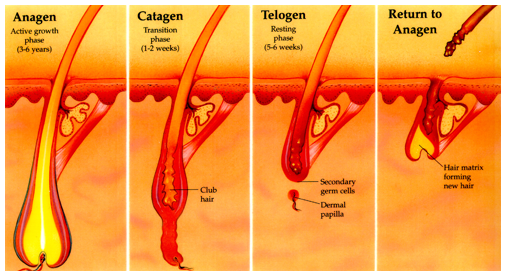Requirement For Face Masks
m m
*Update: Announcement posted on 21st April 2023
Please fill-in all required information in the space provided.
* All submitted contacts and messages will be kept confidential.
Bang Rak, Bangkok, 10500
Thailand
02-632-1089
Here at Harley St. Hair Centre, we have a selection of world-class Scientists, Trichologists, and experienced Chemists at our disposal to help you combat hair loss, premature receding / thinning of hair and advanced progressive baldness.

*Update: Announcement posted on 21st April 2023


Certain medications can temporarily inhibit hair growth, and your hair will grow back after dose adjustment or cessation. Some may induce male or female pattern baldness and cause permanent hair loss. The reason why they may do so is that they cause damage to your hair follicle. Damage to hair follicle causes disruption in the normal hair growth cycle and hence leads to hair loss. Different types of drugs can induce hair loss through a number of mechanisms.
Drugs such as oral contraceptives can cause levels of hormone to fluctuate, leading to female pattern baldness. The following drug types may lead to Telogen effluvium: Beta-blockers, blood thinners, ACE inhibitors, anti-depressants or even high doses of Vitamin A. It is important to consult your doctor or pharmacist about the potential side effects of the drugs you are taking.

Stress does not cause hair loss per se but has been known to precipitate hair loss. It can do so by different mechanism such as increasing normal levels of blood dihydrotestosterone, causing a miniaturization of the hair follicle, thus making the hair appear thinner. One of stress-induced conditions is Telogen Effluvium, where the hair stops growing but remains asymptomatic for two to four months until it falls out later. This type hair loss is not permanent and the hair returns completely within a year.
Another common type of stressed-related hair loss affecting one to two percent of the population is Alopecia areata, where the white blood cells attack the hair follicle, causing rapid hair loss, starting off in bald patches. Over time, the whole scalp can be affected and all the hair is lost (alopecia totalis). If you think you are experiencing premature hair thinning or baldness, it is advisable to visit our Trichologist.

Alopecia
The most common causes of hair loss in both male and female are hormone-related. Hormonal hair loss or “androgenetic alopecia,” is the most common cause of adult hair loss. Male hormones (androgens) are believed to underline the mechanism of hair loss. Two key androgens involved in hair loss are Testosterone and Dihydrotestosterone (DHT).
Testosterone is converted by the enzyme 5-alpha reductase to its active form DHT, which then binds androgen receptor found on and inside of various cells including hair follicles. Androgen receptor activation causes miniaturisation and eventual loss of hair as the hair follicles become smaller and thinner. Additionally, the growing phase (anaphase) of the hair cycle is also reduced, further contributing to hair loss.

Genetic predisposition to hair loss can be understood as a hereditary susceptibility of hair follicle to male hormone (Androgen). Hair loss as a result of androgen is termed “androgenetic alopecia.” Androgenetic alopecia only affects individuals who inherited the gene for ‘baldness’ from either parent. However, is important to note that not everyone who carries the gene susceptible for androgenic alopecia will develop hair loss.
The gene responsible for androgenic alopecia codes for an important enzyme 5-alpha reductase that converts Testosterone to its active form Dihydrotestosterone (DHT), which binds androgen receptor found on the cell membrane of various cells including hair follicles. Androgen receptor activation on the hair follicles causes the hair to become smaller and thinner. This is especially true for individuals whose hair follicles are genetically predisposed to become oversensitive to DHT.

Sample from our female client
Unlike men, hair loss in women or female androgenetic alopecia can generally be seen evenly across the scalp, without definite bald patches and can be caused by inherited genetic influences, an over production of the male hormone androgen, hormonal changes following childbirth, oral contraceptive pills, anaemia and menopause.
Female Androgenetic Alopecia is caused by inherited hormonal fluctuations that result in DHT oversensitivity. The hair follicles are genetically predisposed to be over sensitive to the DHT and starts to lose diameter and length leading eventually to diffuse hair loss.
All above causes are treatable once the problem has been identified by our experienced trichologists at Harley Street Hair Centre. Contact us now for a free consultation and get the right treatment.

Sample from our male clients
Many men will experience hair loss as part of aging process, whereas some men can begin losing hair earlier in their teens and young adult years. The most common causes of hair loss in men are genetics and hormonal. The male hormones called androgens are determined in individual men by a genetic or inherited process. Excessive androgen, Dihydrotestosterone (DHT) causes androgenic alopecia. Male pattern baldness or androgenetic Alopecia is characterised by miniaturisation and eventual loss of hair and hair follicle in the lateral sides of the forehead followed by thinning at the crown of the head. The hair follicles that are genetically predisposed to DHT are prone to follicular miniaturisation and thus results in hair loss.
Get help early. Our Trichologist at Harley Street Hair Centre will help you to understand how we can inhibit the onset of this type of baldness and even effectively regrow lost hair.

Hair Growth Cycle
The average human head has around 90,000 –120,000 hair follicles, growing at an average of 0.5 to 1 centimetre per month. Each hair follicle follows a cycle of growth until it sheds at the end of the cycle. There are 3 main phases in the hair growth cycle:
1. ANAGEN (GROWING) PHASE
- Growth phase of the hair follicle and new hair is formed.
- Approximately 85-90% of the hair follicles spend 2 – 5 years in this phase.
- This is the only phase where laser therapy is effective.
2. CATAGEN (TRANSITION) PHASE
- Intermediate phase of hair growth.
- Lasts for 1 – 2 weeks.
- The dermal papillae - a group of cells that contain blood vessels and nutrients supplying the hair follicle, begins to separate from the hair follicle.
- Hair follicles slowly transition into the resting phase.
3. TELOGEN (RESTING) PHASE
- The dermal papilla is completely separated from the hair follicle.
- Old hairs reach the end of their cycle and falls out.
- Lasts for 3-4 months.
- At the end of this phase, new hair growth is initiated.

***Company reserves the right to change conditions without any notice.

We all are likely to experience some degree of hair and scalp problem during our lifetime. Unfortunately, some of us may experience hair loss. Understanding different types of hair loss and their underlying causes is the first step to finding the most effective way to treat them. There are about forty-six clinical types of hair loss suffered by men and women with great individual variability but most conditions are gender specific and can be correctly treated by a proper diagnosis.
Hair loss can be separated into different types depending on the cause. Several types of baldness include: Alopecia areata (autoimmune), Telogen effluvium, diffuse hair loss and Traction alopecia (mechanical). The most common causes of hair loss is genetics and hormonal, namely, androgenetic alopecia.
Androgenetic alopecia is a male hormone (androgen) driven condition where dihydrotestosterone (DHT) an active form of Testosterone, acts to cause follicular miniaturisation - degeneration of hair follicle and shortens the growth phase (anaphase) of the hair cycle. As the hair follicle gradually degrades, the shaft thickness is reduced. Together with less time in anaphase, the amount of hair shed exceeds hair growth. The end result is progressive baldness until the scalp hair appears as ‘vellus hair,’ where the hair has degraded to the point where it is barely noticeable. If the hair loss progresses until all the scalp hair is lost from the head, this is called alopecia totalis.
Genetics and hormones are not the only factors for hair loss. Hair thinning is often a result of poor circulation, artificial hormone level changes, mineral deficiency, diet, medications, illness or even stress.
No matter what the cause, early diagnosis is essential in prevention of the onset of hair loss. Consult with your doctor or see our specialists to understand your condition and receive the correct treatment for your hair or scalp problem now.